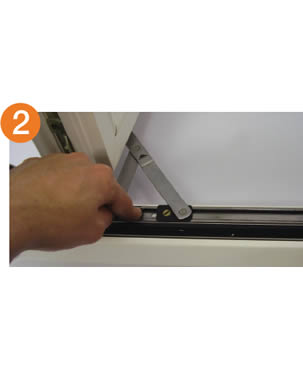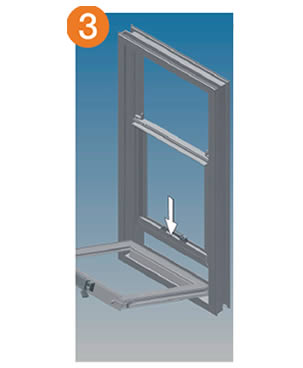Outward-opening casement windows
The outward-opening casement window hinges open to allow access to clean the outside of your windows (as shown right).
Fire-egress hinges
For windows that need easy access in case of fire, the hinges open in a way to give the maximum opening but prevent the ability to clean the window from this position. These windows can be easily moved along the hinge track to allow for cleaning outside.





















